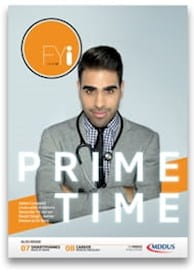Day 1
A 52-year-old woman – Mrs K – attends her GP complaining of a very sore back with pain radiating to her left knee. The GP suspects a prolapsed disc and arranges a private referral to an orthopaedic surgeon – Mr P.
Day 8
Mr P examines Mrs K in an outpatient clinic and arranges for an MRI scan. A week later the surgeon speaks with Mrs K to say he has reviewed the scan and identified a slipped disc. They discuss options and he recommends surgery to remove the disc.
Week 3
Mrs K is admitted to a private hospital and Mr P performs an L5/S1 nerve root decompression without excision of the slipped disc. He writes to the GP informing her that Mrs K is no longer experiencing leg pain.
Month 9
The patient is referred again to Mr P. She reports increasing pain in both legs over the last three weeks. The surgeon arranges for another MRI and the scan shows that the previous L4/L5 prolapse has increased in size. A further operation is scheduled.
Month 11
Mr P removes the slipped disc but the patient complains that this has only made the pain worse and more especially in her right leg. A few days later the surgeon examines Mrs K and diagnoses a DVT in the right leg and discharges her for review. The patient is commenced on anticoagulant medication. Two weeks later another physician examines Mrs K and concludes that the pain is most likely related to her back and is not a DVT. Mrs K is again referred to Mr P who arranges for another MRI scan. This time he informs the patient that her pain is being caused by scar tissue and an operation to correct this would be far too dangerous. Nothing more can be done.
Month 20
The pain suffered by Mrs K intensifies to the degree that she is unable to work. Her employer arranges for Mrs K to see another orthopaedic surgeon. He examines the patient and reviews her MRI scans. Later phoning her GP he states that the most recent scan reveals two surgical patties present in the spinal canal – obviously left in place during the second surgical procedure. He believes that these are the cause of the patient’s chronic pain. A decision is made to leave the surgical patties in place rather than risk another operation to remove them.
Year 3
An action is served on Mr P on behalf of Mrs K alleging breach of duty both in performing unnecessary back surgery and in doing so leaving two surgical patties in her spinal canal. The action claims that due to Mr P’s negligence Mrs K has suffered pain and some loss of sensation in both legs and reduced mobility which has forced her to give up work. In the meantime Mrs K has been diagnosed with an unrelated cancer. She dies one year later and the case is continued by her husband as an executor on behalf of the estate.
EXPERT reports are commissioned by MDDUS in regard to the case. In regard to breach of duty Mr P admits to having failed to remove the surgical patties but an expert report on nursing procedure also confirms that it is the duty of the scrub nurse to keep a count of surgical patties used in an operation and inform the surgeon if there is any discrepancy between items supplied and those recovered during the operation. In this matter MDDUS contacts the private hospital in regard to shared liability. Mr P also admits negligence in failing to identify (via MRI scan) and inform the patient of the retained surgical patties.
In regard to causation a number of experts report on their examination of Mrs K and the general opinion is that the surgical patties may have been a factor in the patient’s symptoms but there was also evidence of lumbar degenerative disease. Concerning the charge that back surgery was unnecessary, the balance of opinion was that the decision to operate was not unreasonable though unlikely to have had any major impact on Mrs K’s condition.
Considering all these factors it was agreed with the member to offer a small settlement to Mrs K’s estate and without admission of liability. Some negotiation followed and the settlement was accepted.
Key points
• Ensure operative protocols are strictly adhered to (see the WHO surgical safety checklist).
• Patients should have full understanding of treatment options and risks in order to make informed decisions.
• Causation (cause and effect of negligence) is a major factor in determining any potential settlement costs in a case.
This page was correct at the time of publication. Any guidance is intended as general guidance for members only. If you are a member and need specific advice relating to your own circumstances, please contact one of our advisers.
Read more from this issue of FYi

Save this article
Save this article to a list of favourite articles which members can access in their account.
Save to library
